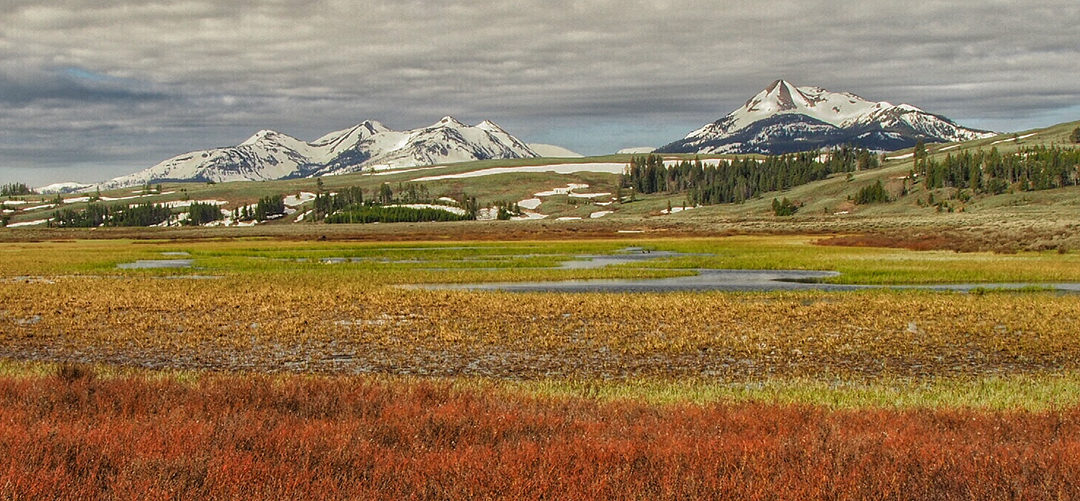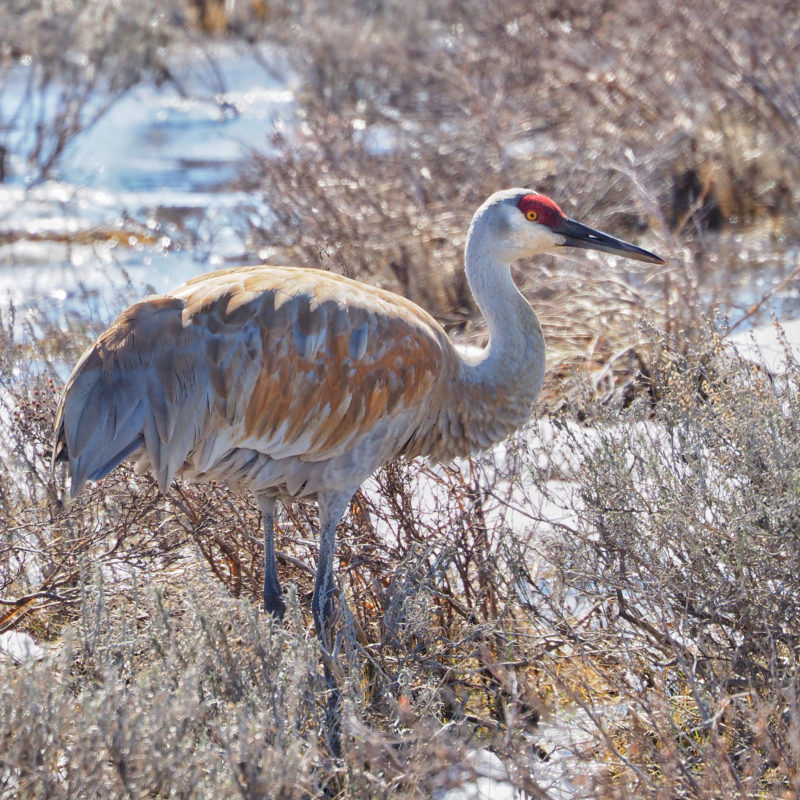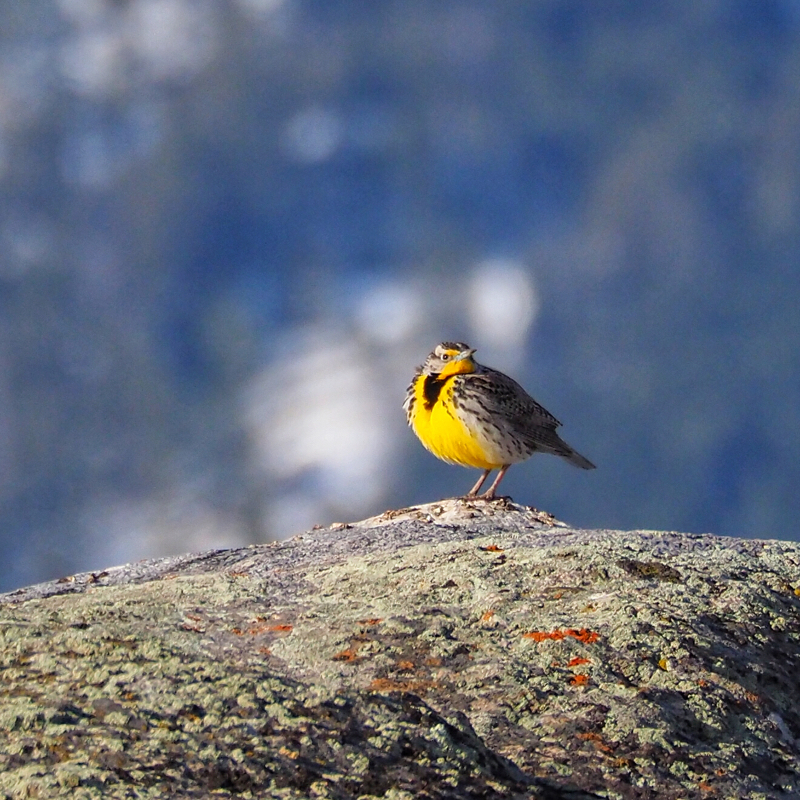Spring is such an exciting time in the park, it is definitely has to rank as one of our favorites! Each day brings something new, from the first bears, to the brilliant flash of gold and blue of meadowlarks and mountain bluebirds. However, with cold and snow that can persist well into late May and early June it’s sometimes hard to tell where winter ends and spring begins. Here are five signs it’s actually spring in Yellowstone.
- Migrant Birds Return. A brilliant flash of indigo blue in the sage catches your eye…bluebirds! The arrival of male mountain bluebirds precedes that of the female and brings gasps of delight and joy to winter weary residents. Mountain bluebirds are one of the first migrant birds to return in spring, along with sandhill cranes, western meadowlarks, American kestrels, red-tailed hawks, and osprey. These birds initiate a cascade of summer migrants to Yellowstone and are a sure sign that spring is here.
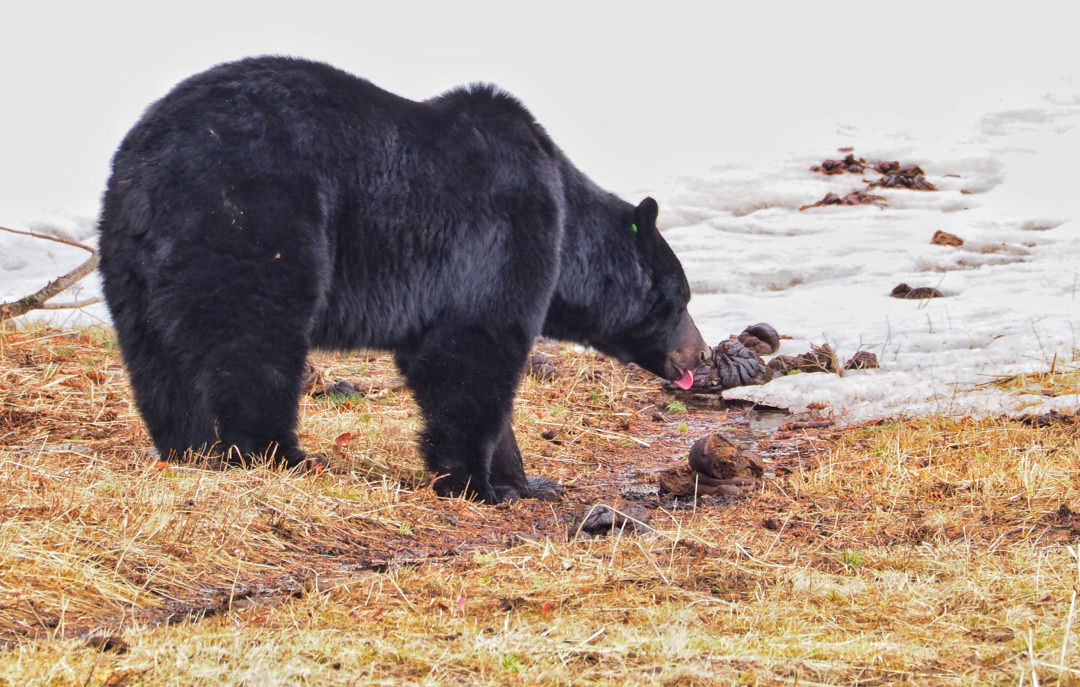
2. Bears Emerge From Their Dens. As spring approaches, we all wait with anticipation for the first report of bear sighting. Male bears, both black and grizzly, start emerging from their dens in late February through early April, followed by sows with cubs few weeks later. For us, it means time to start packing bear spray again, along with getting out early in the morning to catch a glimpse of our first bear of the year. Those first bears are always memorable—for more Yellowstone bears read First Grizzly Bear: An Annual Treat and watch the Yellowstone Bears Are Out! video.
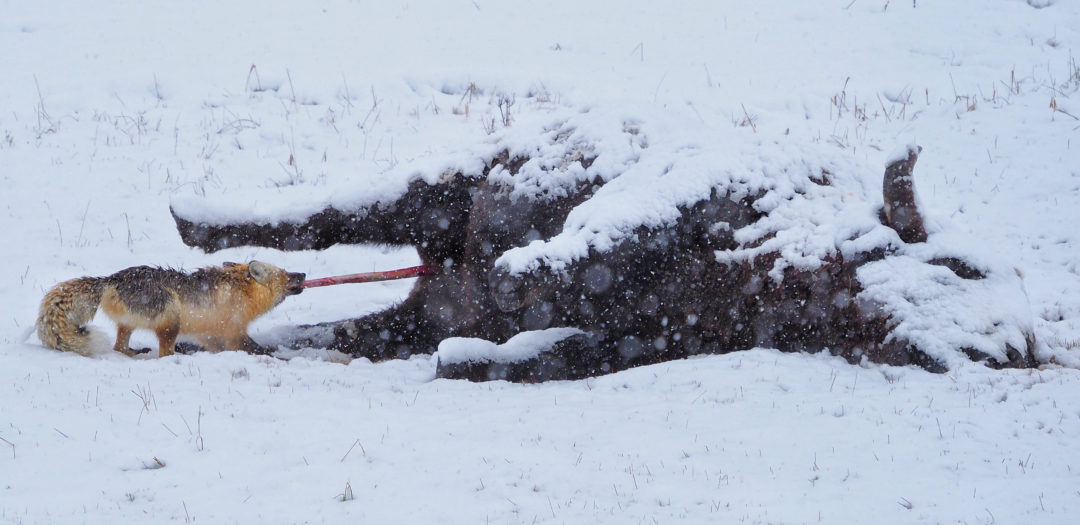
3. Winter-Kill Carcasses Appear. The transition from winter to spring is a precarious one in Yellowstone, particularly for ungulates such as deer, bison, and elk. Many lack the reserves to make it all the way to the spring green up, and many of those that do, still meet their end with those first meals of succulent grass. The green-up, die-off comes from a ‘system overload’ when animals that have been subsisting on rough, low-quality forage all winter long transition, almost overnight, to the very high nutrient, high moisture food of spring. While its sad for the deceased, many more creatures—bears, coyotes, ravens, magpies, eagles and more—rely on these winter-killed animals for their own nutrition and to feed there young AND they make for interesting animal sightings for wildlife watchers too!
4. It’s Snowing… Seriously! Spring in Yellowstone means preparing for all kinds of weather. While there can be mild and sunny days, it often feels a lot like it’s still winter. Just recently it was 60 degrees one day, and a blizzard the next! Many locals will continue “spring skiing” well into late May and early June, where snow still clings to the mountaintops and north-facing slopes. We like to search for those first snow-free places in order to get out and explore the landscape on foot once again.
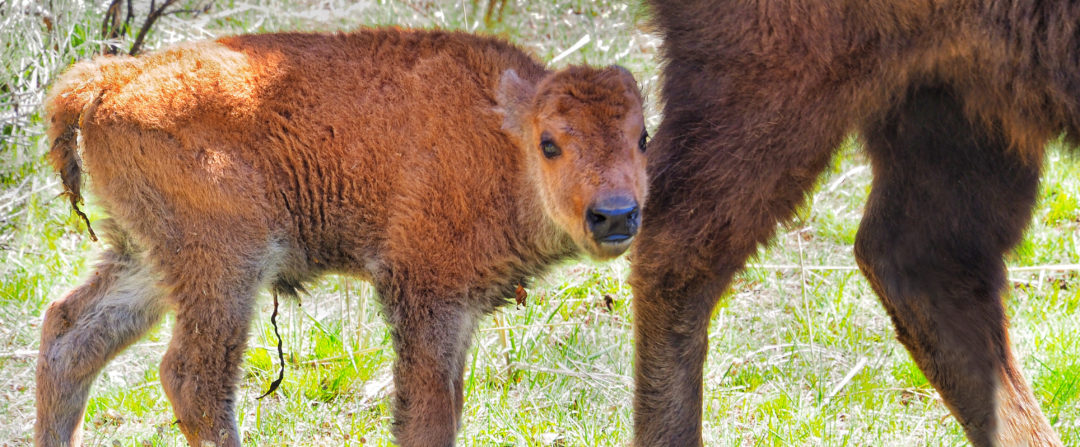
5.Baby Bison Are Born. Second only to grizzlies, few things are anticipated in Yellowstone’s spring as much as the arrival of the first baby bison. Born in mid April, the wobbly calves are up on their feet in 10-20 minutes and running with the herd within hours. Soon, it seems the entire landscape is littered with little “red dogs” running and jumping, kicking and cavorting. We enjoy finding a quiet place to sit, observe the herds, and listen to their soft grunts and watch their gentle dance across the green meadows.
These are just a few of the exciting signs of spring in Yellowstone. For tips on off the beaten path ways to explore Yellowstone in spring, read Our Top Five Yellowstone Spring Favorites.
Photos: Jenny Golding

